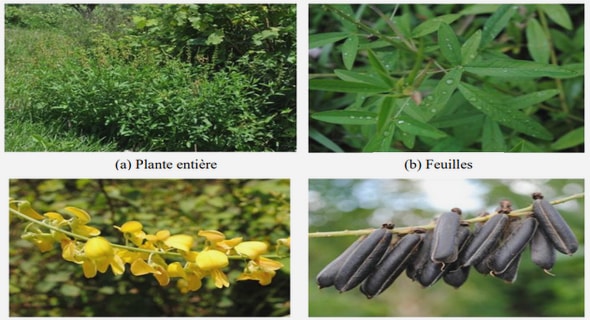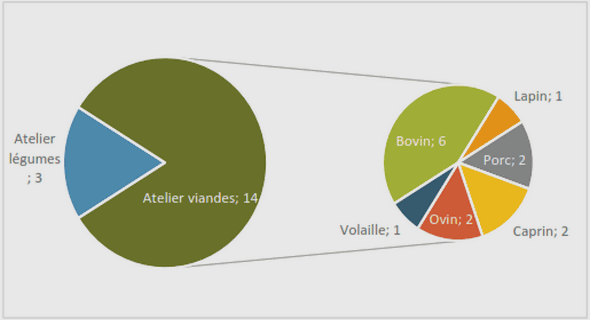Materials and methods
Cloning and expression of recombinant DmHsp27
The cDNA of wild type DmHsp27 (DmHsp27WT) (Morrow et al., 2006) was cloned into the small ubiquitin-related modifier (SUMO) fusion vector pETHSUK ( a gift from Dr. S.Weeks, (Heirbaut et al., 2014, Weeks et al., 2007)) using GIBSON ASSEMBLY (NEB). The expression of the recombinant proteins as fusions with SUMO protein increased significantly protein expression. This is enhanced by the availability of SUMO-hydrolase, which removes specifically SUMO from the fusion protein (Amerik and Hochstrasser, 2004, Weeks et al., 2007). Point mutations were introduced by PCR, using GIBSON ASSEMBLY (NEB).
The Escherichia coli BL21 (DE3) pLysS strain (NEB) was used for expression of DmHsp27WT and mutants. Briefly, transformed bacteria were grown in 10 ml of Luria-Bertani (LB) broth miller (EMD Millipore) containing 100 µg/ml ampicillin (Biobasic Canada) at 37 °C overnight. After a 1:50 dilution, the bacteria were grown 3 h at 37 °C until an OD600 around 0.6. Protein expression was then induced by 0.1 mM isopropyl β-D-1-thiogalactopyranoside (IPTG) (Roche) 5 h at 30 °C. Bacterial cells were collected by centrifugation, washed twice with binding buffer (5 mM Imidazole, 500 mM NaCl, 20 mM Tris-HCl pH 8) and stored at -80 °C until purification.
Purification of recombinant DmHsp27
The cell pellet was suspended in 10 ml of binding buffer supplemented with 0.01 mg/ml of DNase (Sigma, Aldrich) and 4 mM of phenylmethanesulfonyl fluoride (PMSF) (Sigma, Aldrich). The cells were lysed in a cold room (+7 °C) using French press (SLM AMINCO). Cell debris were removed by centrifugation at 10,000 g at 4 °C for 30 min. The soluble fraction was incubated with 1 ml bed volume of Ni-NTA agarose (Qiagen) to separate recombinant protein from contaminating proteins by chelate affinity chromatography. The column was washed with 30 volumes of washing buffer (60 mM Imidazole, 500 mM NaCl, 20 mM Tris-HCl pH 8). Bound protein was eluted with elution buffer (500 mM Imidazole, 500 mM NaCl, 20 mM Tris-HCl pH 8). The eluate was collected in 1 ml fractions. The fractions containing the pure protein were dialyzed against storage buffer (20 mM Tris-HCl pH8, 150 mM NaCl, 1 mM dithiothreitol (DTT)), concentrated and pooled. Pooled fractions were digested with SUMO-Hydrolase and additionally purified by size exclusion chromatography (SEC) using a Superose 6 10/300 column (GE Lifesciences) equilibrated with 20 mM Tris-HCl pH 8, 150 mM NaCl, 1mM DTT to remove SUMO-Hydrolase, HIS-SUMO-tag and undigested protein. Protein fractions were verified by SDS-PAGE, pure samples were pooled together and concentrated using centrifugal filters (Amicon, EMD Millipore).
Fluorescence spectroscopy
Intrinsic tryptophan fluorescence was measured in fluorescence buffer (150 mM NaCl, 20 mM HEPES-KOH pH 8) at 20 °C. Fluorescence of protein samples (0.1 mg/ml) was excited at 295 nm and recorded in the range 300–400 nm (both slits width 5 nm).
Temperature-induced conformational changes of DmHsp27WT were followed by recording intrinsic tryptophan fluorescence. The pure protein samples (0.1 mg/ml) in fluorescence buffer were heated with the constant rate 1 °C/min from 20 up to 90 °C and cooled back at the same rate using Varian Cary Eclipse spectrofluorometer. Tryptophan was excited at 297 nm and fluorescence recorded at 332 nm (slits 5 nm).
Analytical SEC
The quaternary structure of DmHsp27WT was analyzed by SEC. Different concentrations of samples were loaded on Superose 6 10/300 column (GE Lifesciences) equilibrated with 20 mM Tris-HCl pH 8, 150 mM NaCl and eluted at 0.5 ml/min. Fractions of 500 µl were collected and their protein composition was analyzed by SDS–gel electrophoresis. For estimating the molecular weight, the column was calibrated with protein markers immunoglobulin M (IGM) from bovine serum (900 kDa) (Sigma), (thyroglobulin (669 kDa), Ferritin (440 kDa), Aldolase (158 kDa), Conalbumin (75 kDa), Ovalbumin (43 kDa) and Blue Dextran 2000 to determine the void volume) (GE Lifesciences).
Native Gel Electrophoresis
The quaternary structure was also resolved by non-denaturing native gel electrophoresis. DmHsp27 was run on pre-cast 4-12% gradient native Tris-Glycine gels (Thermo Fisher Scientific) in Mini-Cell electrophoresis system (XCell SureLock, Life Technology). Gels were run at 150 V for 90 min. After electrophoresis, the protein complexes were stained with Coomassie blue.
Luciferase heat-induced aggregation assay
The heat-induced aggregation assay was conducted essentially as described in (Morrow et al., 2006). Luciferase (0.1 µM, Promega) was heat-denatured at 42 °C in the absence or presence of DmHsp27WT or its arginine mutants for 30 minutes (0.4 µM). Aggregation was determined by light-scattering at 320 nm on a spectrophotometer with thermostated cells (Varian Cary 100, Montreal, Quebec, Canada). Data are representative of 3 different assays and expressed as the mean ± standard deviation.
Insulin DTT-induced aggregation assay
Chaperone-like activity was also determined by aggregation of insulin as a result of the reduction of disulfide bonds (Holmgren, 1979). Insulin (52 µM, Sigma) in 10 mM potassium phosphate, 100 mM NaCl (pH 8) was pre-incubated alone or in the presence of (13 µM) DmHsp27WT or mutants for 30 minutes. The reaction was started by addition of DTT up to the final concentration of 20 mM and aggregation of insulin was followed by an increase in the optical density at 320 nm on a spectrophotometer with thermostated cells. Data are representative of 3 different assays and expressed as the mean ± standard deviation.
Molecular modeling
The 3D models of ACD of DmHsp27WT and its mutants were built with SWISS-MODEL (Biasini et al., 2014) using as template the ACD of HspB1 (PDB: 4MJH). The obtained models were energy minimized by KoBaMIN (Rodrigues et al., 2012) and their quality were assessed by Ramachandran plot analysis through PROCHECK (Laskowski et al., 1993). Ramachandran plot revealed that 96% and 4% of residues are in favoured and allowed region, respectively. Visualization of 3D models was realized with PyMOL software (http://pymol.org/).
Dynamic light scattering
For complex characterization, dynamic light scattering (DLS) experiments were performed with 800 nm radiation on a DynaPro instrument (Wyatt Technology Corp., Santa Barbara, CA) as described previously (Michiel et al., 2009, Skouri-Panet et al., 2012). All samples were filtered through 0.22 µm filters. The protein concentration was adjusted to 0.2 to 2 mg/ml. The sample volume was 80 µl and the acquisition time was 10 s for a total measurement of up to 1 h. The sample temperature was controlled with a Peltier cell with a precision of 0.1 °C. The hydrodynamic radius (Rh) and the polydispersity (% Pd) were obtained using regularization methods (Dynamics software, version 6).
Cell culture and transfection conditions
Hela cells were maintained in MEM Alpha (Gibco) supplemented with 5% FBS penicillin, and streptomycin. For transfections, cells were plated 24 h in advance at a confluence of 175 000 cells/well (6 well plate) containing glass coverslip. Then, cells were washed three times in OptiMEM (Gibco) and incubated for 4 h in OptiMEM containing the plasmid (pcDNA-DmHsp27):Lipofectamine (Invitrogen) complex (1.5 µl Lipofectamine/1.5 µg DNA) prepared according to the manufacturer’s protocol. After the incubation, cells were washed 3 times with complete medium and without antibiotics and left to express for 24 to 72 h before being processed for immunofluorescence.
Immunofluorescence analyses
Cells were washed 3 times in PBS and fixed by incubation in pre-chilled methanol at − 20 C for 20 min. They were washed 3 times with PBS containing 0.1% Tween20-X (PBST) and blocked for 1 h in PBST containing 5% BSA (PBST-BSA), for 1 h at room temperature. After blocking, cells were incubated in primary antibody (monoclonal anti-DmHsp27 (2C8E11)(Michaud et al., 2008)) diluted (1/20) in PBST-BSA for 1 h at room temperature. After washing with PBST, cells were incubated with secondary antibody (goat anti-mouse Alexa 488 (Invitrogen)) for 45 min. Coverslips were mounted in Vectashield mounting medium (Vector Laboratories). Samples were visualized using an Axio Observer Z1 microscope equipped with an Axiocam camera (Carl Zeiss, Canada).
Results
Dimerization of DmHsp27
sHsps show a significant underrepresentation of cysteines. The reduction of the number of cysteines in these sequences may be important to prevent unwanted cross-linking under oxidative conditions, which would prevent subunit exchange and thus hinder the dynamics of sHsps (Kriehuber et al., 2010). The sequence of DmHsp27 has a single cysteine residue at position 93, located in the β3 strand (Fig 3.1 A). Human HspB1 and murine Hsp25 can form dimers by an intermolecular disulfide bond between cysteine residues at position 137 and 141 respectively located in the β6+7 strand (Zavialov et al., 1998, Baranova et al., 2011) (Fig 3.1 A).
To assess if the disulfide bond is involved in dimeric interface between cysteines residues in the β3 strand of DmHsp27, we examined its migration on a native gel under reductive and non-reductive conditions compared to human HspB1 and DmHsp22. Human HspB1 was used as a positive control (Baranova et al., 2011) and DmHsp22 that does not have cysteine was used as a negative control. As seen in Fig 3.1 B, DmHsp27 behaves like DmHsp22 suggesting that the dimeric interface does not involve disulfide bond.
A 3D structure model of ACD-DmHsp27WT was generated based on the defined structure of ACD-HspB1 (PDB 4MJH, (Hochberg et al., 2014)), sharing 70% similarity and 53% identity (Fig 3.1 A). According to the resulting model of DmHsp27, ACD monomer is folded into a compact, six-stranded β-sandwich composed of two β-sheets. The first contains β3, β8 and β9 strands and, therefore, both termini of ACD, and the second β-sheet contains β4, β5 and β6+7 strands (Fig 3.1 C). The β-strands are interconnected by 3- to 10-residue-long loops. The largest loop, L4 (residues 119–128), connects the β5 and β7strands. DmHsp27 has the metazoan dimer structure, in which the β6- and β7-strands are fused into an elongated strand that forms the dimer interface with its counterpart from the neighbouring monomer in an anti-parallel orientation.


